Effects of Soil Conditioning on Characteristics of a Clay-Sand-Gravel Mixed Soil Based on Laboratory Test
Abstract
1. Introduction
2. Methods and Materials
2.1. Image Particle Analysis System
2.2. Mixing Test
2.3. Slump Test
2.4. Friction Coefficient Test
3. Soil Samples and Foam Agent Used in Experiments
4. Results and Discussions
4.1. Analysis of Decay Behavior of Foam Microstructure
4.2. Results and Discussion of Mixing Test
4.3. Result and Discussion of Slump Test
4.4. Results and Discussion of Friction Coefficient Test
5. Conclusions
Author Contributions
Funding
Conflicts of Interest
References
- Herrenknecht, M.; Thewes, M.; Budach, C. The development of earth pressure shields: from the beginning to the present/ Entwicklung der Erddruckschilde: Von den Anfängen bis zur Gegenwart. Geomech. Tunn. 2011, 4, 11–35. [Google Scholar] [CrossRef]
- Budacha, C.; Thewes, M. Application ranges of EPB shields in coarse ground based on laboratory research. Tunn. Undergr. Space Technol. 2015, 50, 296–304. [Google Scholar] [CrossRef]
- Kim, T.H.; Kim, B.K.; Lee, K.H.; Lee, I.M. Soil conditioning of weathered granite soil used for EPB shield TBM: A laboratory scale study. KSCE J. Civ. Eng. 2019, 23, 1829–1838. [Google Scholar] [CrossRef]
- Ye, X.Y.; Wang, S.Y.; Yang, J.S.; Sheng, D.C.; Xiao, C. Soil Conditioning for EPB Shield Tunneling in Argillaceous Siltstone with High Content of Clay Minerals: Case Study. Int. J. Geomech. 2017, 17, 05016002. [Google Scholar] [CrossRef]
- Wang, S.M.; Lu, X.X.; Wang, X.M.; He, C.; Xia, X.; Ruan, L.; Jian, Y.Q. Soil Improvement of EPBS Construction in High Water Pressure and High Permeability Sand Stratum. Adv. Civ. Eng. 2019, 2019, 1–9. [Google Scholar] [CrossRef]
- Zhao, B.Y.; Liu, D.Y.; Jiang, B. Soil Conditioning of Waterless Sand–Pebble Stratum in EPB Tunnel Construction. Geotech. Geol. Eng. 2018, 36, 2495–2504. [Google Scholar] [CrossRef]
- Langmaack, L.; Lee, K.F. Difficult ground conditions? Use the right chemicals! Chances-limits-requirements. Tunn. Undergr. Space Technol. 2016, 57, 112–121. [Google Scholar] [CrossRef]
- Alavi Gharahbagh, E.; Rostami, J.; Talebi, K. Experimental Study of the Effect of Conditioning on Abrasive Wear and Torque Requirement of Full Face Tunneling Machines. Tunn. Undergr. Space Technol. 2014, 41, 127–136. [Google Scholar] [CrossRef]
- Merritt, A.S.; Mair, R.J. Mechanics of Tunnelling Machine Screw Conveyors: Model Tests. Géotechnique 2006, 56, 605–615. [Google Scholar] [CrossRef]
- Merritt, A.S.; Mair, R.J. Mechanics of Tunnelling Machine Screw Conveyors: A Theoretical Model. Géotechnique 2008, 58, 79–94. [Google Scholar] [CrossRef]
- Yang, Y.Y.; Li, H.A. Failure mechanism of large-diameter shield tunnels and its effects on ground surface settlements. J. Cent. South Univ. Technol. 2012, 10, 2958–2965. [Google Scholar] [CrossRef]
- Martinelli, D.; Peila, D.; Campa, E. Feasibility study of tar sands conditioning for earth pressure balance tunneling. J. Rock Mech. Geotech. Eng. 2015, 7, 684–690. [Google Scholar] [CrossRef]
- Quebaud, S.; Sibai, M.; Henry, J.-P. Use of Chemical Foam for Improvements in Drilling by Earth-Pressure Balanced Shields in Granular Soils. Tunn. Undergr. Space Technol. 1998, 13, 173–180. [Google Scholar] [CrossRef]
- Yang, Y.Y.; Wang, G.H.; Li, H.A.; Huang, X.G. The new clay mud and its improvement effects of tunnels. Appl. Clay Sci. 2013, 79, 49–56. [Google Scholar] [CrossRef]
- Wei, Y.J.; Yang, Y.Y.; Qiu, T. Effects of soil conditioning on tool wear for earth pressure balance shield tunneling in sandy gravel based on laboratory test. J. Test. Eval. 2019, 49. [Google Scholar] [CrossRef]
- Yang, Y.Y.; Wang, G.H. Experimental Study on Amelioration Effects of Foam for EPBS Tunnels. Disaster Adv. 2012, 5, 1734–1740. [Google Scholar]
- ASTM C143-C143M-15a. Standard Test Method for Slump of Hydraulic-Cement Concrete; ASTM International: West Conshohocken, PA, USA, 2015. [Google Scholar] [CrossRef]
- Vinai, R. A Contribution to the Study of Soil Conditioning Techniques for EPB TBM Applications in Cohesionless Soils. Ph.D. Thesis, PhD-Turin Institure for Technology, Turin, Italy, 12 April 2006. [Google Scholar]
- Vinai, R.; Oggeri, C.; Peila, D. Soil conditioning of sand for EPB applications A laboratory research. Tunn. Undergr. Space Technol. 2008, 23, 308–317. [Google Scholar] [CrossRef]
- Peila, D.; Oggeri, C.; Borio, L. Using the Slump Test to Assess the Behavior of Conditioned Soil for EPB Tunneling. Environ. Eng. Geosci. 2009, 3, 167–174. [Google Scholar] [CrossRef]
- Peila, D.; Picchio, A.; Chieregato, A. Earth pressure balance tunnelling in rock masses: Laboratory feasibility study of the conditioning process. Tunn. Undergr. Space Technol. 2013, 35, 55–66. [Google Scholar] [CrossRef]
- Peila, D. Soil conditioning for EPB shield tunneling. KSCE J. Civ. Eng. 2014, 18, 831–836. [Google Scholar] [CrossRef]
- GB/T 50123. Standard for geotechnical testing method. National Standard of the People’s Republic of China (in Chinese). 2019. Available online: http://www.waizi.org.cn/bz/66863.html (accessed on 2 August 2019).
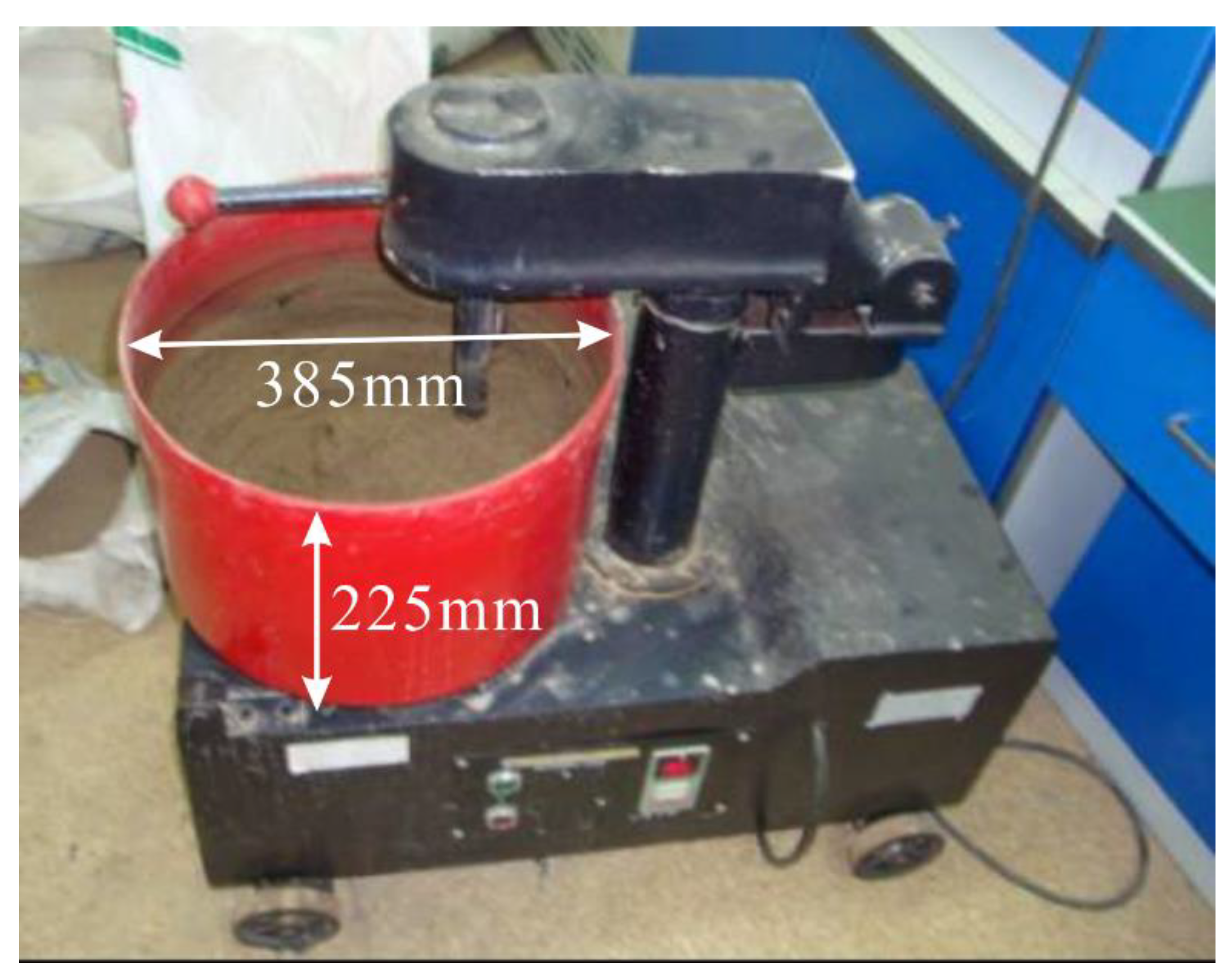
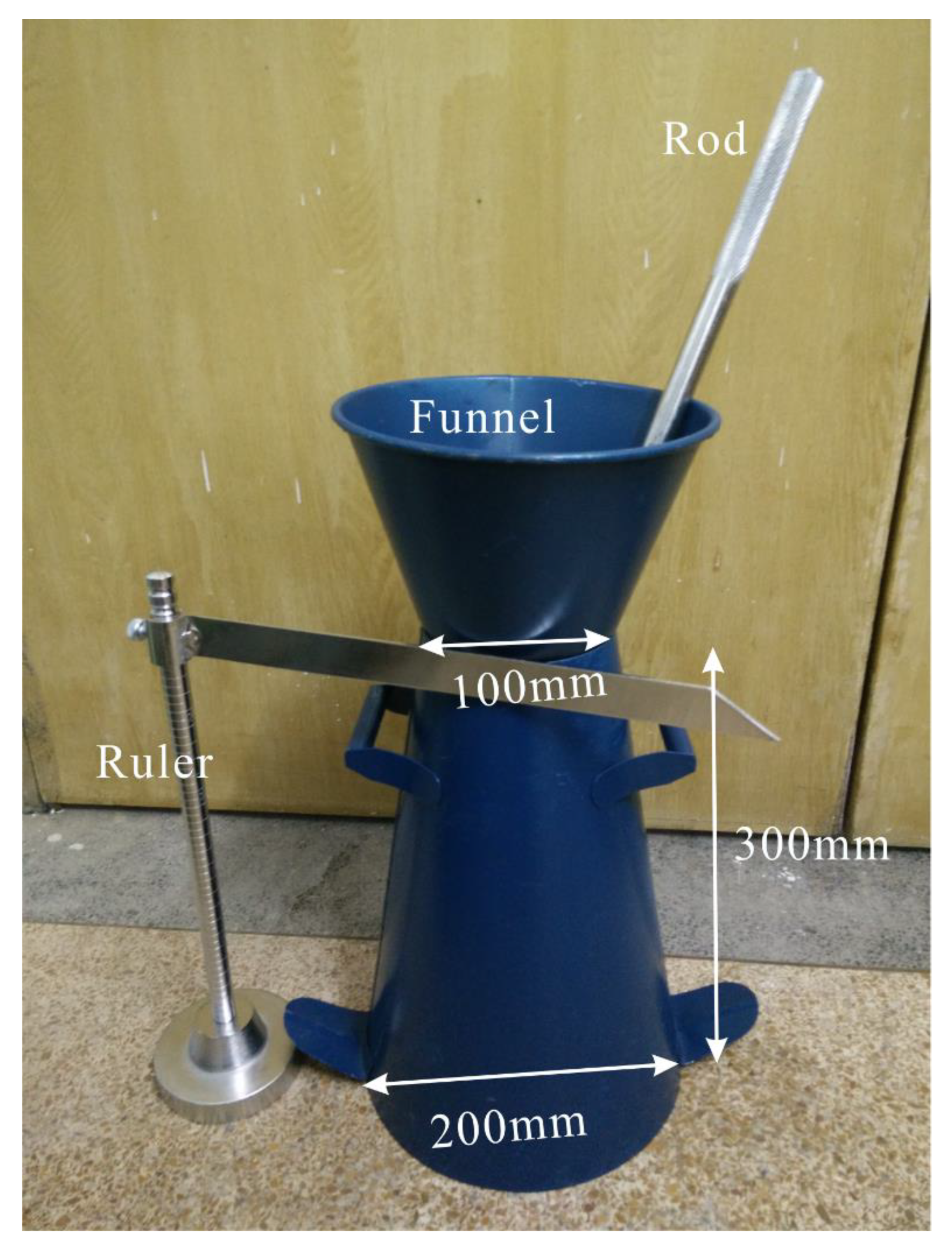
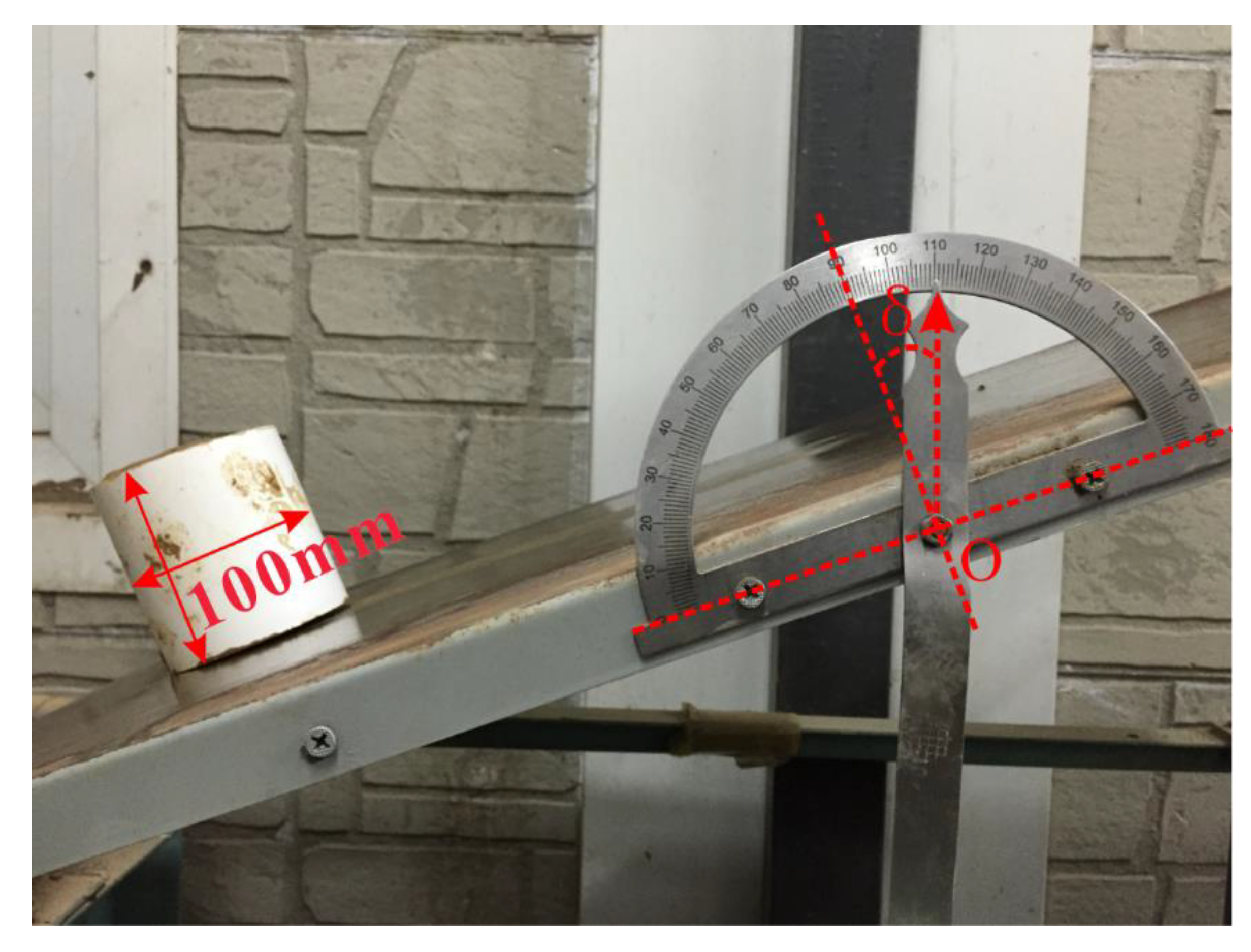

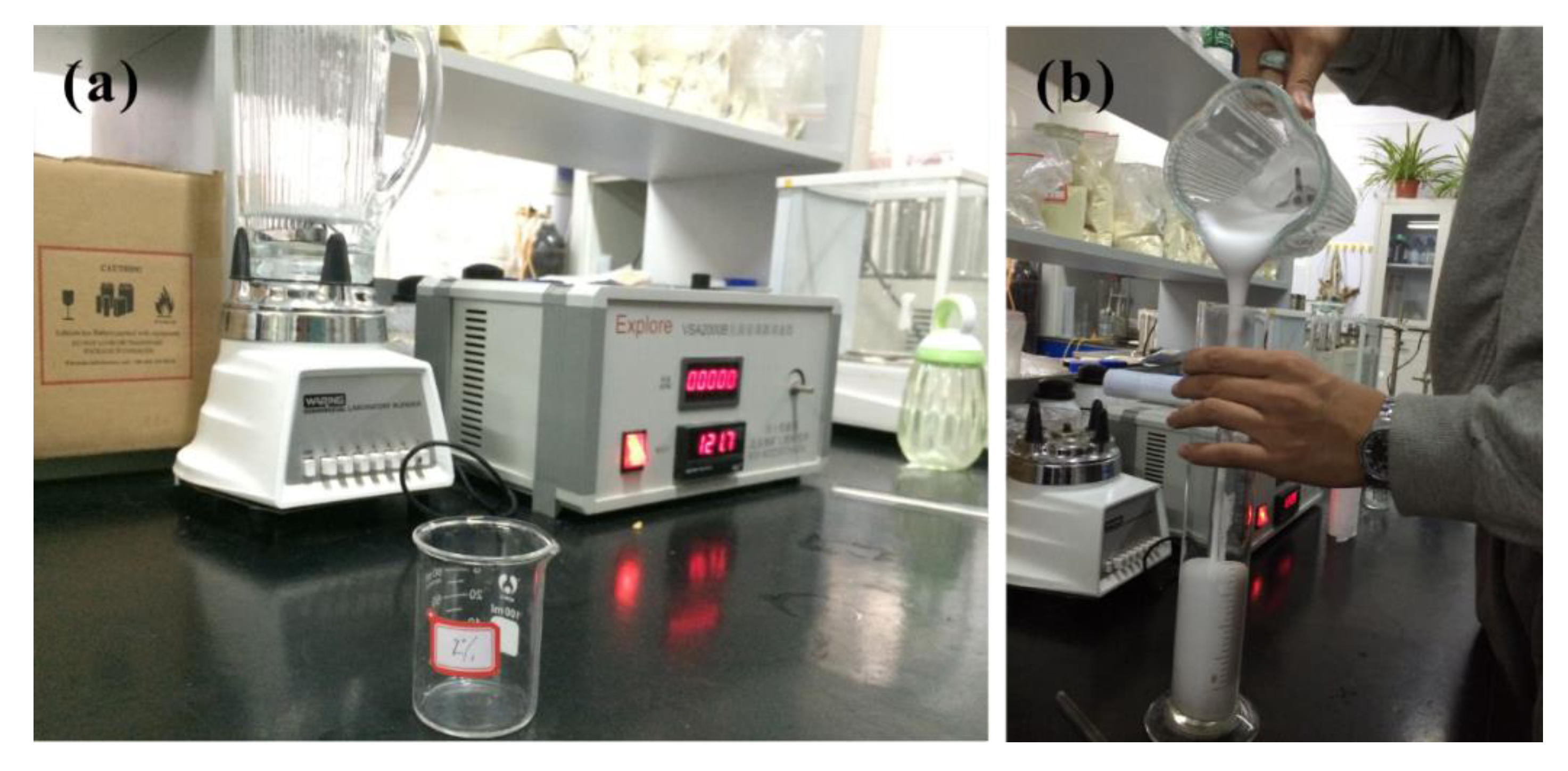
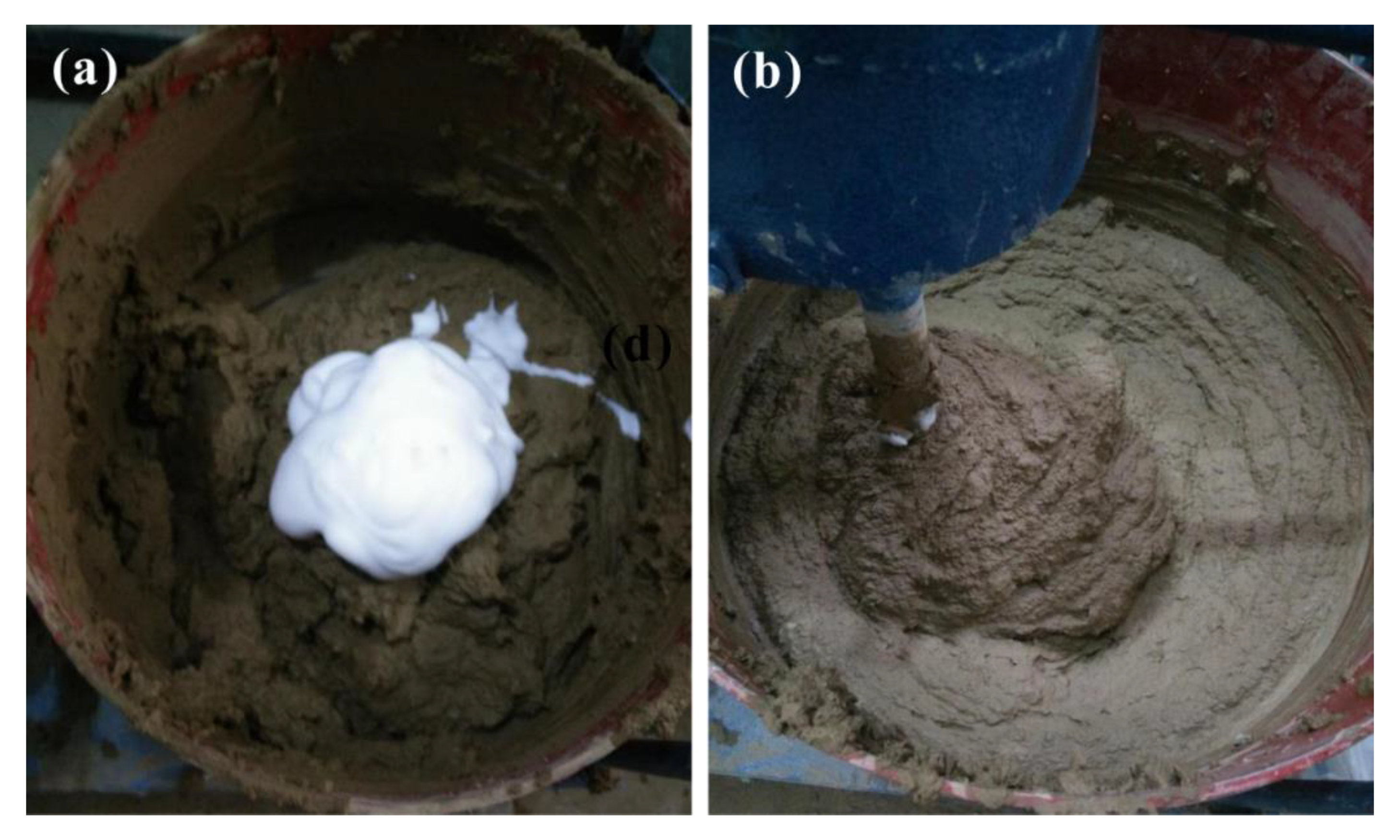

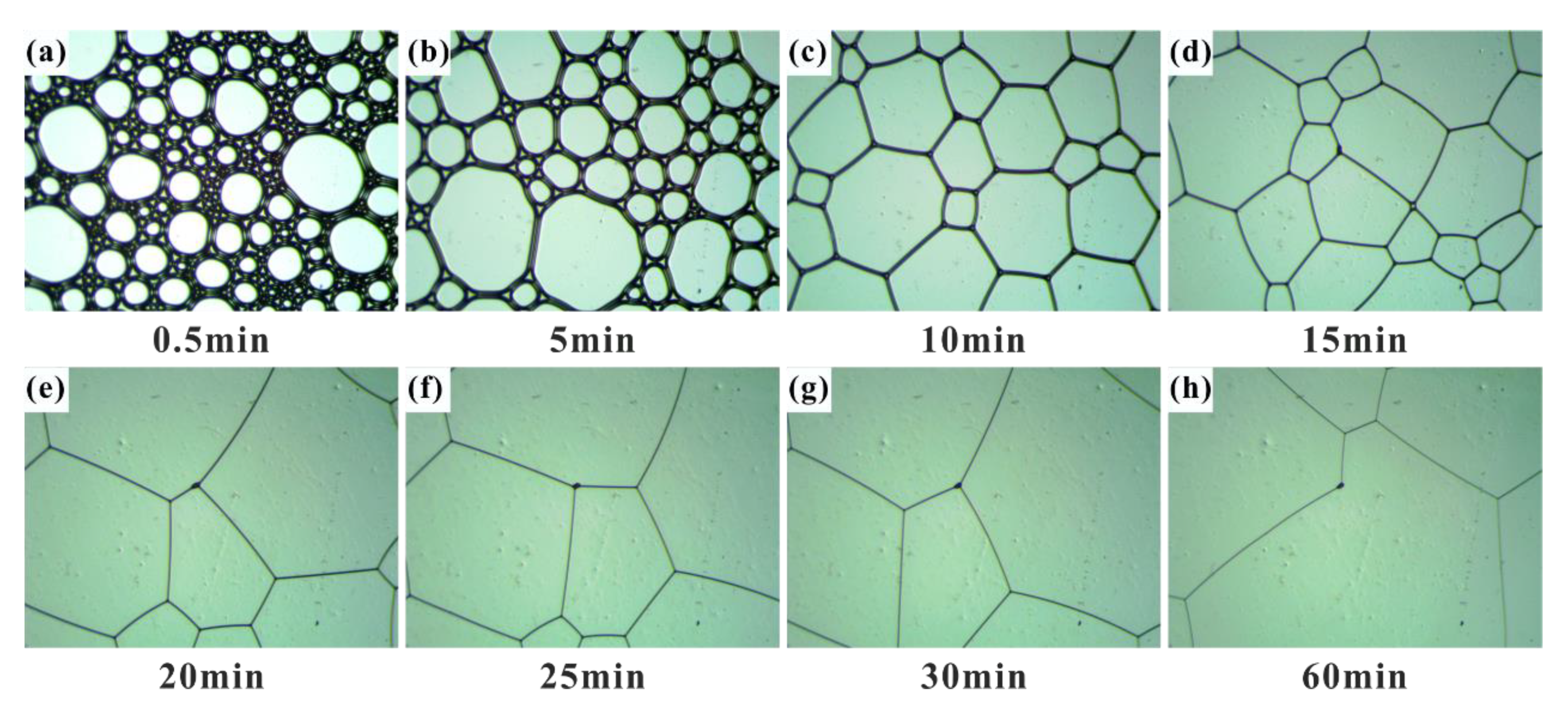
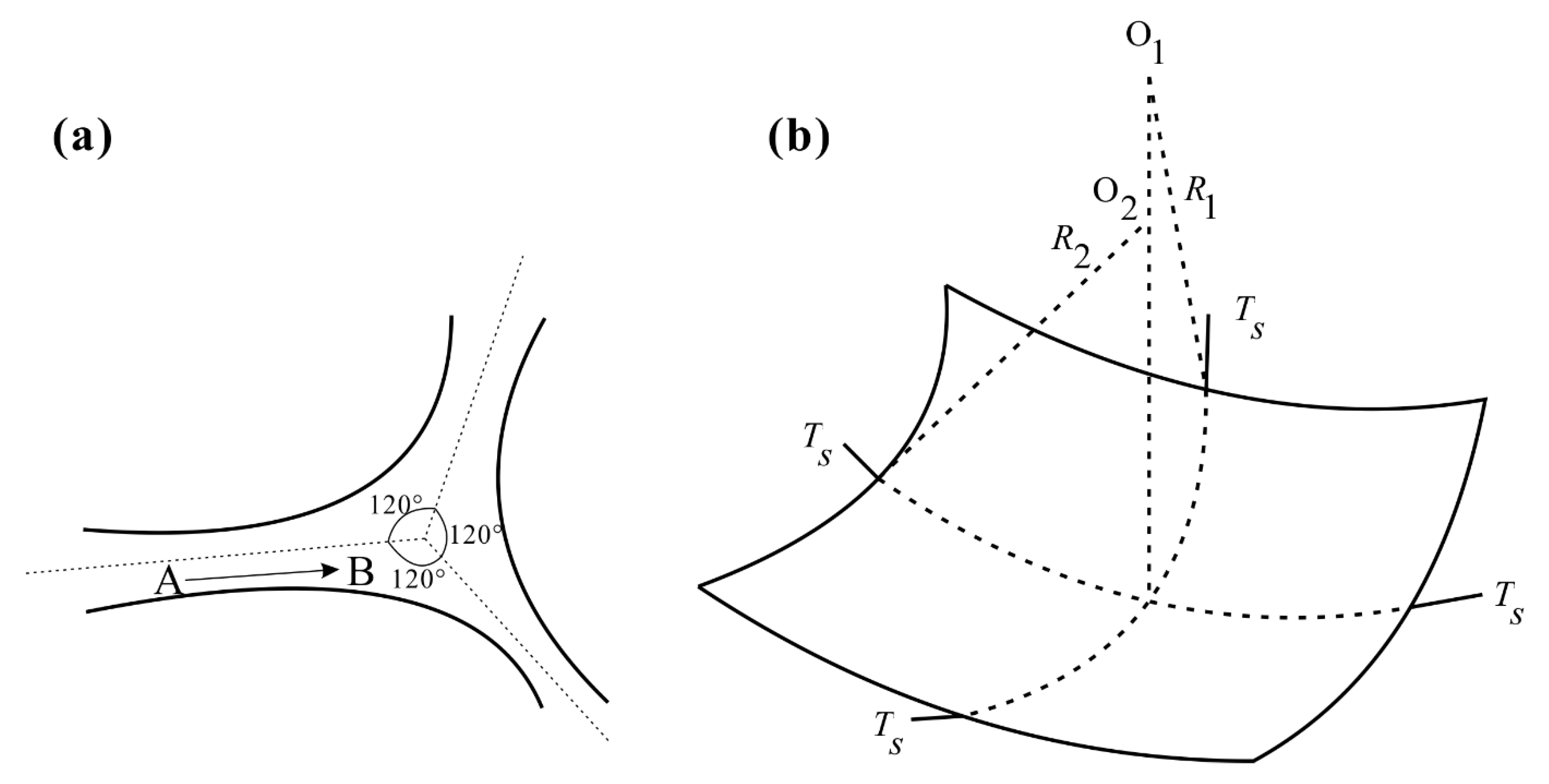

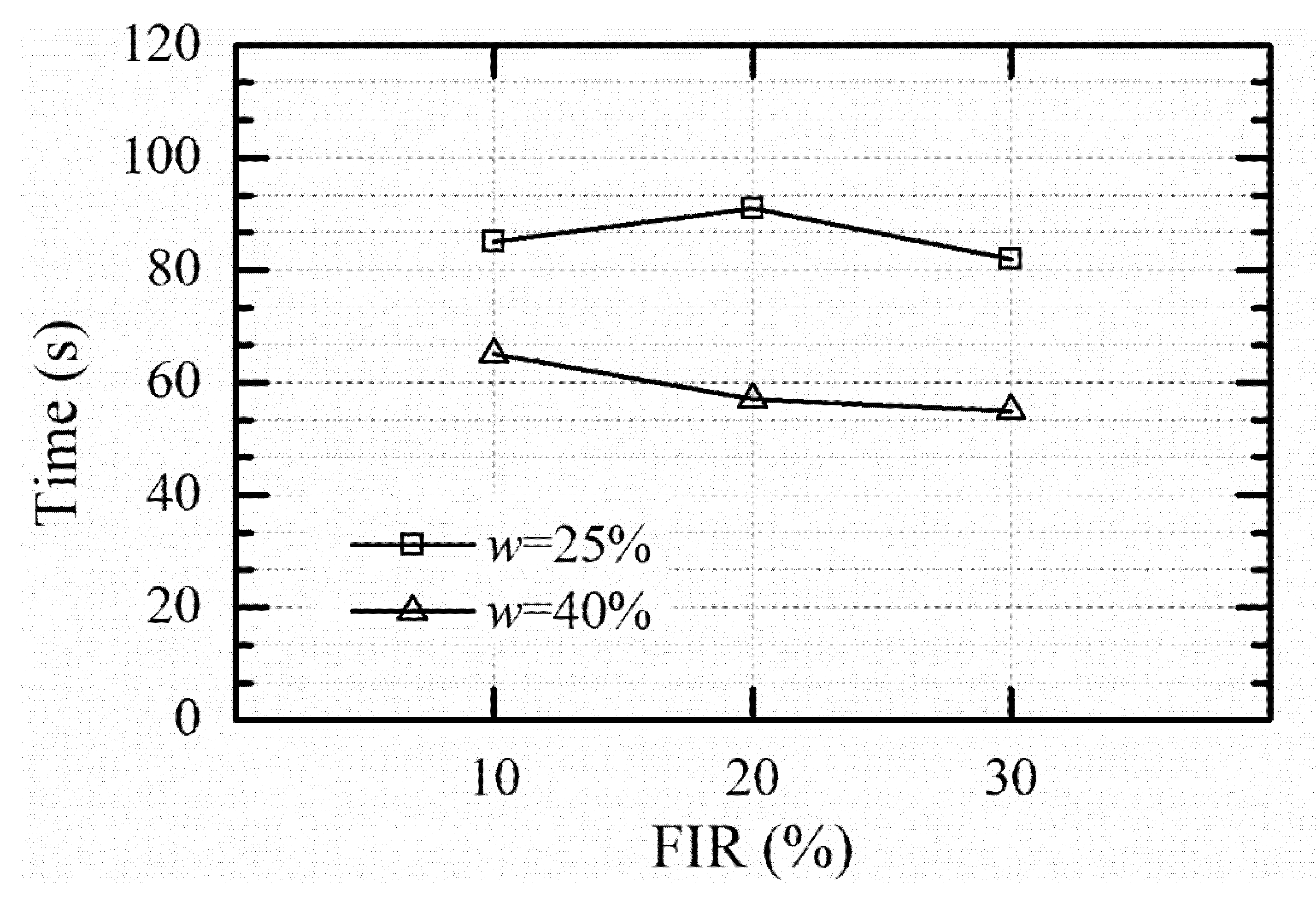
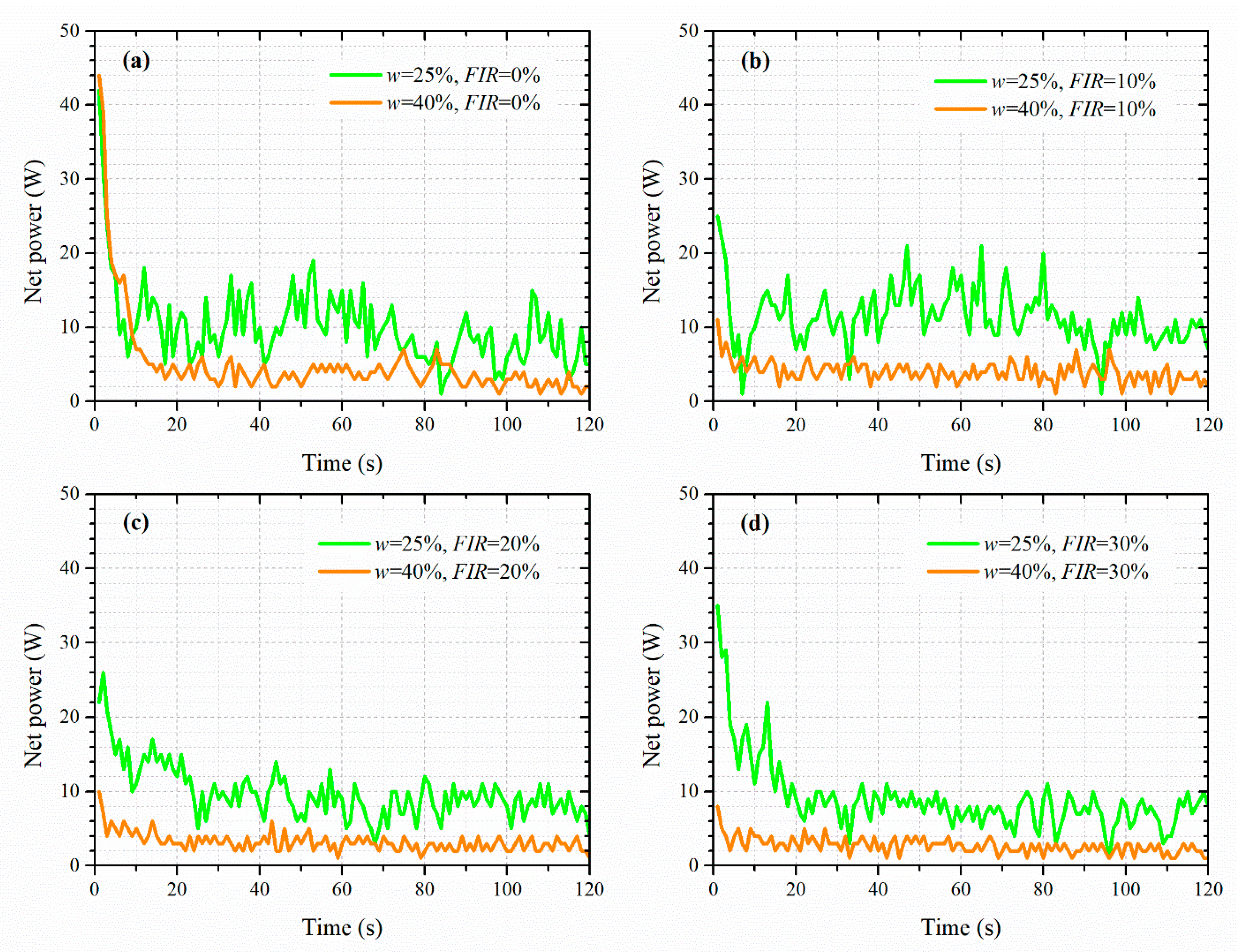
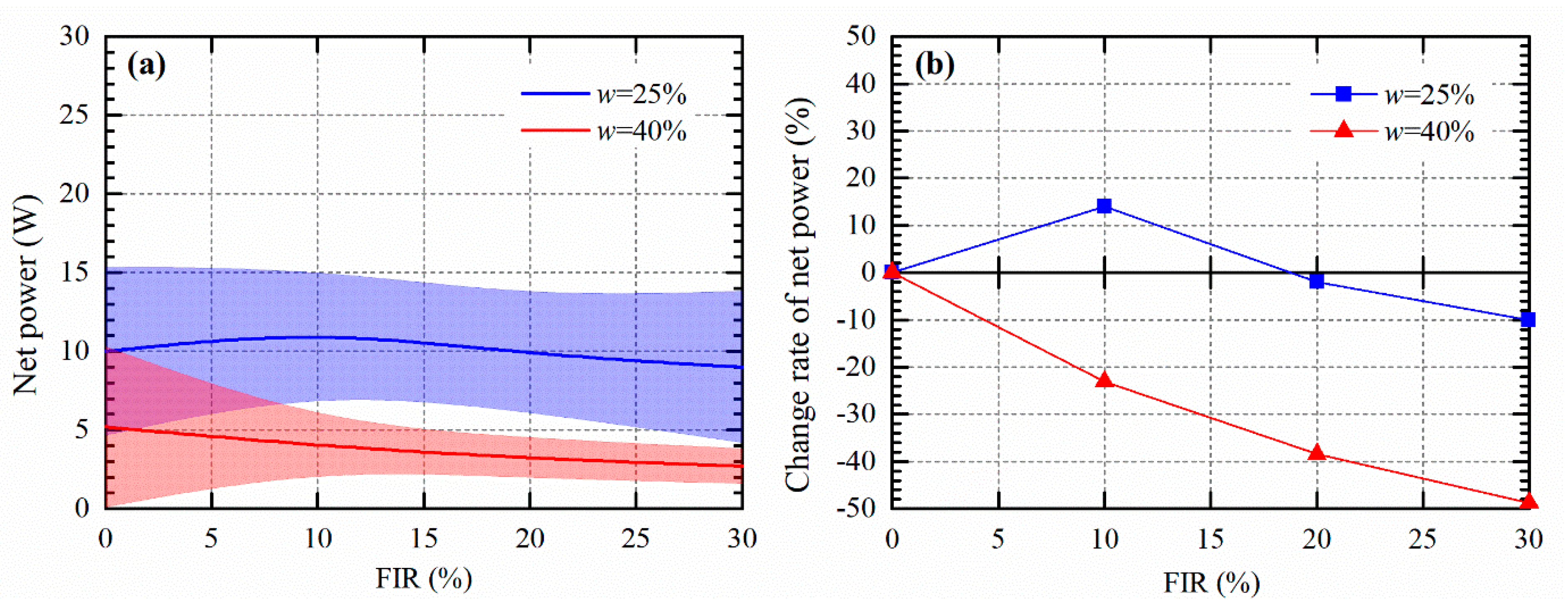
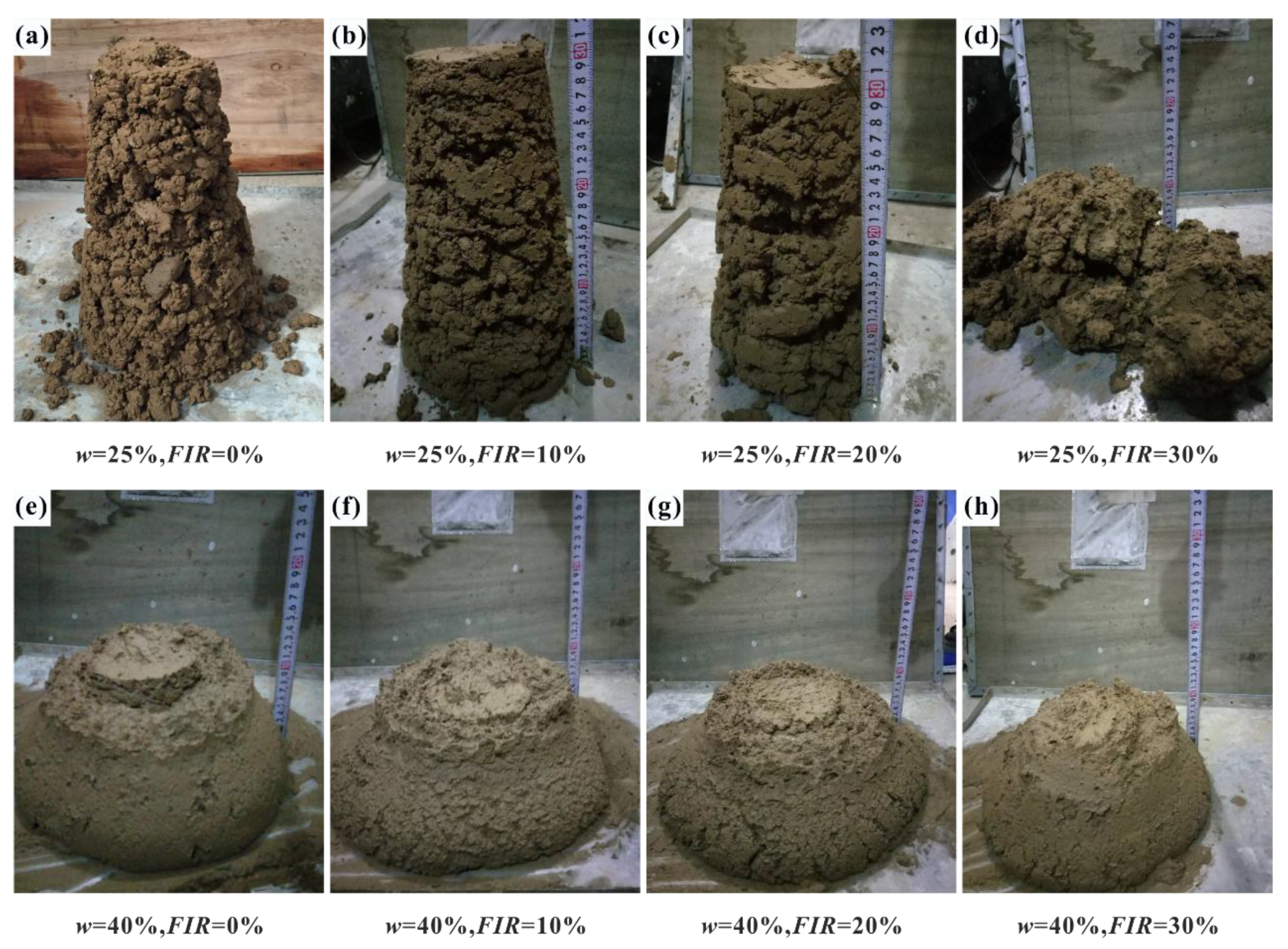
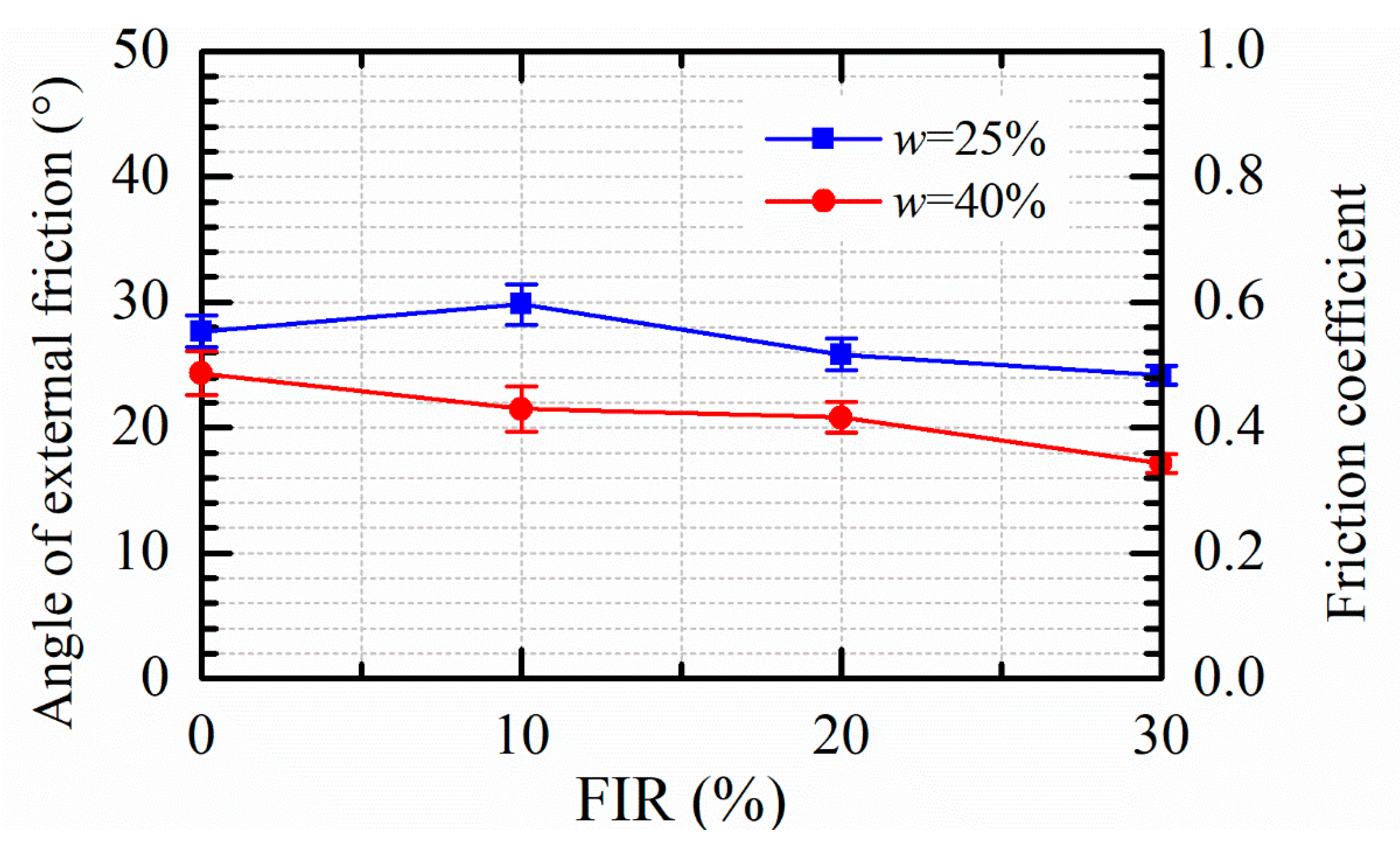
| Soils | Natural Bulk Density | Void Ratio | Cohesion | Internal Friction Angle |
|---|---|---|---|---|
| ρ | e | c | φ | |
| (g/cm3) | (kPa) | (°) | ||
| Silty clay | 1.96 | 0.77 | 25 | 10 |
| Fine to medium sand | 2.00 | 0.60 | 0 | 30 |
| Sandy gravel | 2.05 | 0.45 | 0 | 45 |
| Soil | Mineral Type | Percent by Mass (%) |
|---|---|---|
| Silty clay | Quartz | 39 |
| Plagioclase | 23 | |
| Microcline | 7 | |
| Calcite | 7 | |
| hematite | 2 | |
| mica | 9 | |
| montmorillonite | 9 | |
| Clinochlore | 4 |
| No. | w | FER | FIR | Slump (mm) | ||||
|---|---|---|---|---|---|---|---|---|
| (%) | (%) | (-) | (%) | Test 1 | Test 2 | Test 3 | Mean | |
| Sample 1 | 25 | 4 | 7 | 0 | 0 | - | - | - |
| Sample 2 | 25 | 4 | 7 | 10 | - | 4 | 2 | - |
| Sample 3 | 25 | 4 | 7 | 20 | 7 | 5 | - | - |
| Sample 4 | 25 | 4 | 7 | 30 | - | - | 7 | - |
| Sample 5 | 40 | 4 | 7 | 0 | 160 | 154 | 149 | 154.3 |
| Sample 6 | 40 | 4 | 7 | 10 | 173 | 180 | 171 | 174.7 |
| Sample 7 | 40 | 4 | 7 | 20 | 179 | 183 | 175 | 179.0 |
| Sample 8 | 40 | 4 | 7 | 30 | 187 | 182 | 178 | 182.3 |
© 2020 by the authors. Licensee MDPI, Basel, Switzerland. This article is an open access article distributed under the terms and conditions of the Creative Commons Attribution (CC BY) license (http://creativecommons.org/licenses/by/4.0/).
Share and Cite
Wei, Y.; Wang, D.; Li, J.; Jie, Y. Effects of Soil Conditioning on Characteristics of a Clay-Sand-Gravel Mixed Soil Based on Laboratory Test. Appl. Sci. 2020, 10, 3300. https://doi.org/10.3390/app10093300
Wei Y, Wang D, Li J, Jie Y. Effects of Soil Conditioning on Characteristics of a Clay-Sand-Gravel Mixed Soil Based on Laboratory Test. Applied Sciences. 2020; 10(9):3300. https://doi.org/10.3390/app10093300
Chicago/Turabian StyleWei, Yingjie, Duli Wang, Jianguang Li, and Yuxin Jie. 2020. "Effects of Soil Conditioning on Characteristics of a Clay-Sand-Gravel Mixed Soil Based on Laboratory Test" Applied Sciences 10, no. 9: 3300. https://doi.org/10.3390/app10093300
APA StyleWei, Y., Wang, D., Li, J., & Jie, Y. (2020). Effects of Soil Conditioning on Characteristics of a Clay-Sand-Gravel Mixed Soil Based on Laboratory Test. Applied Sciences, 10(9), 3300. https://doi.org/10.3390/app10093300





